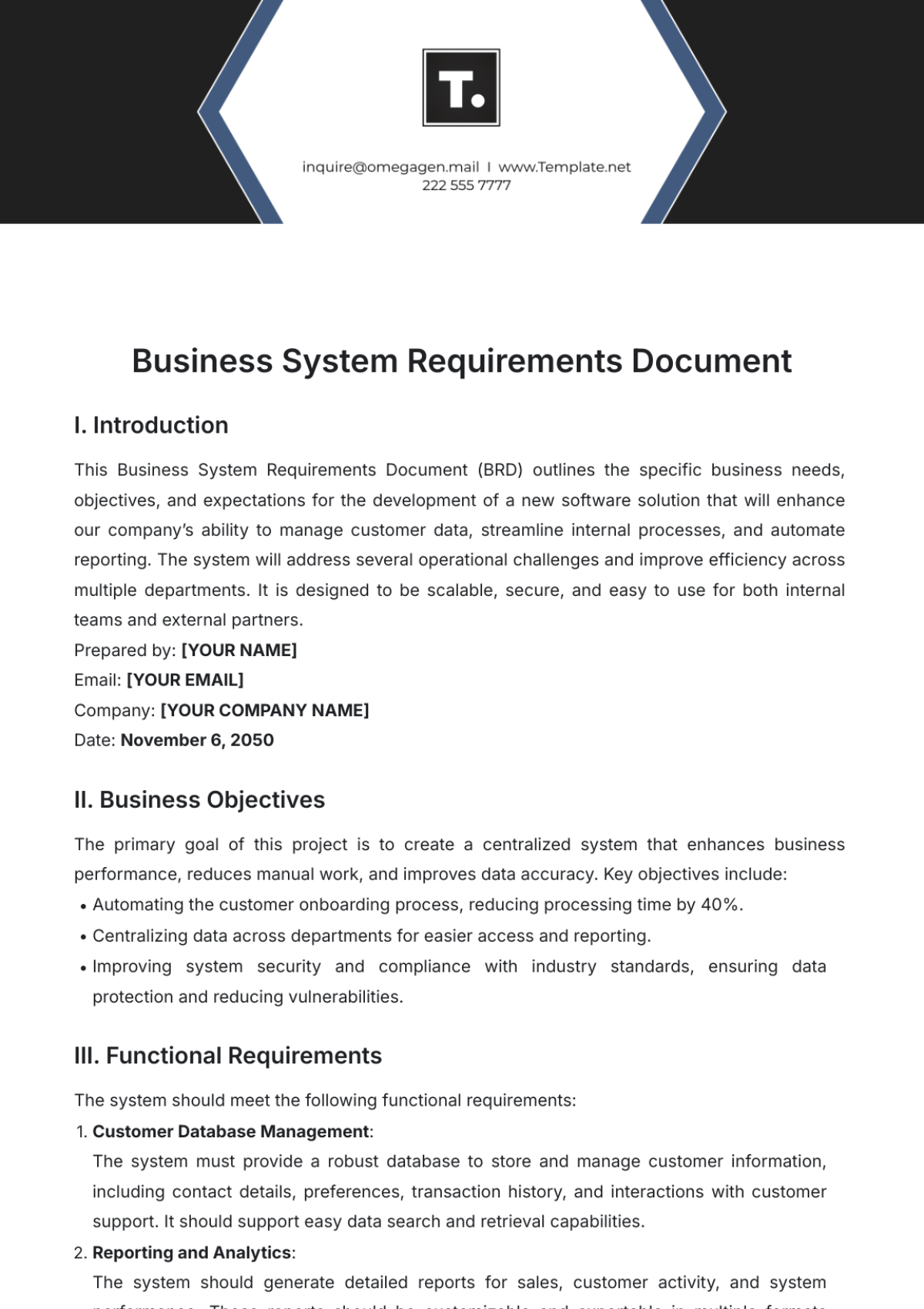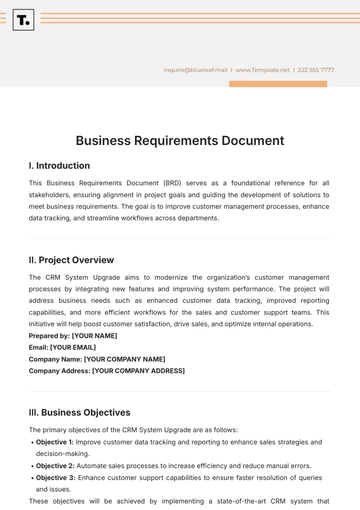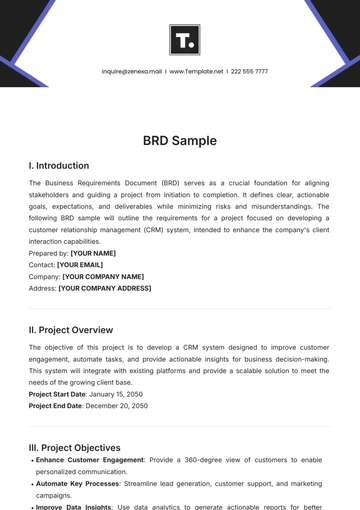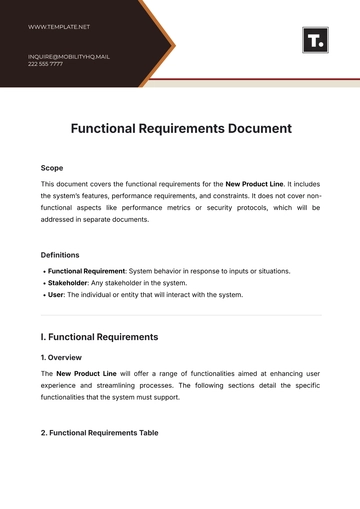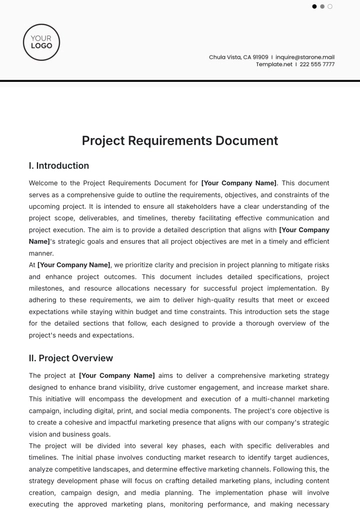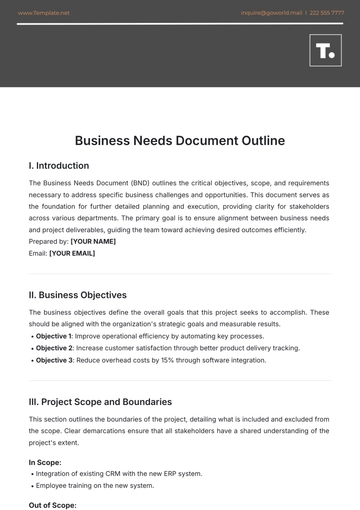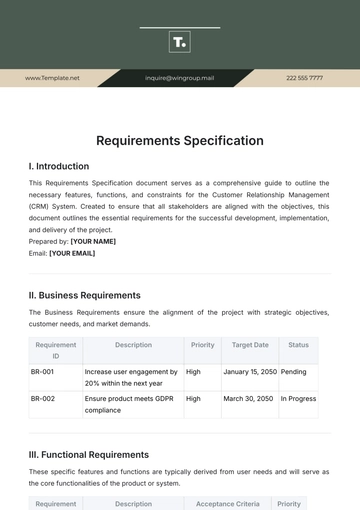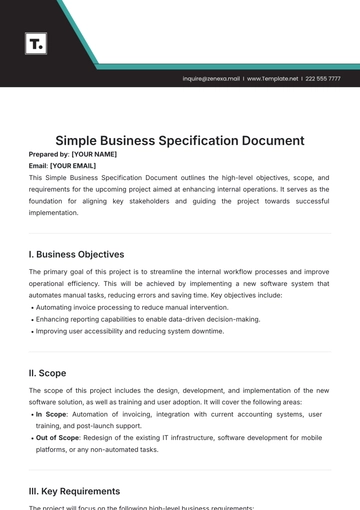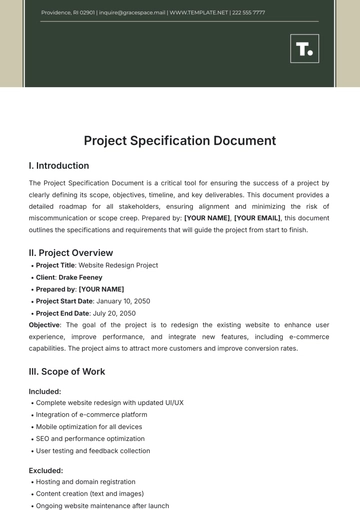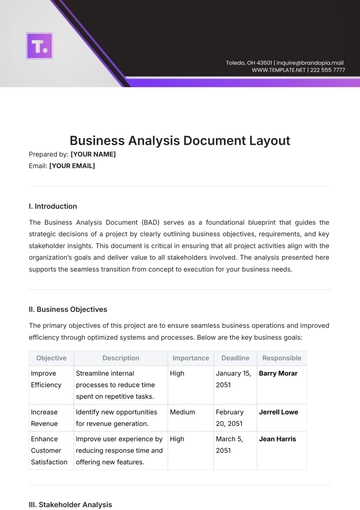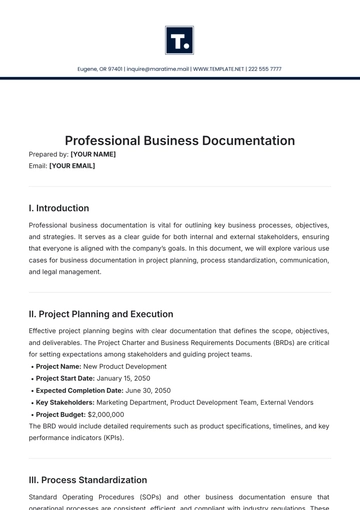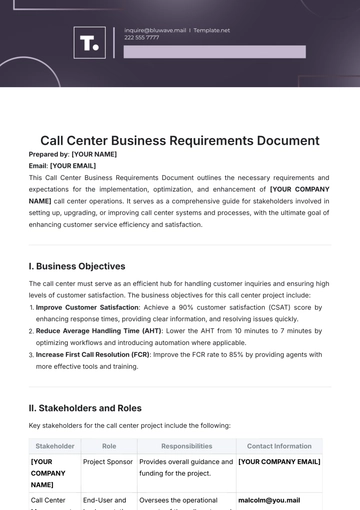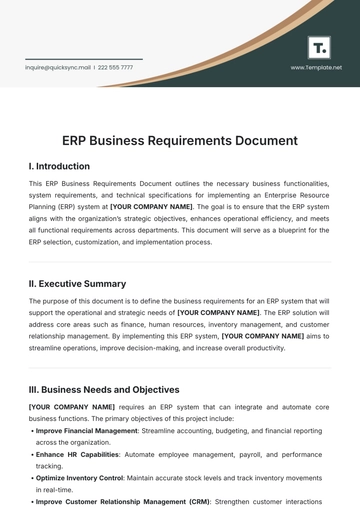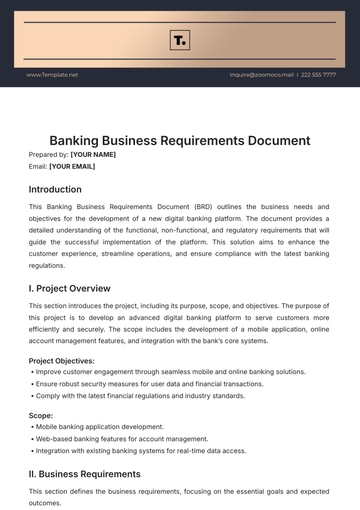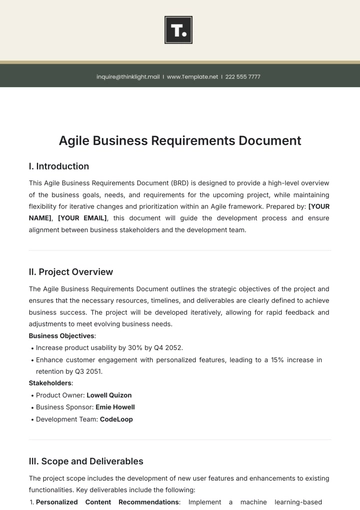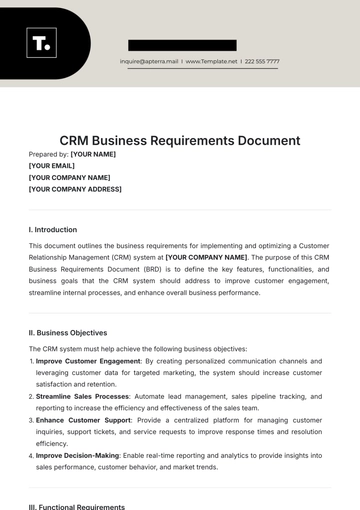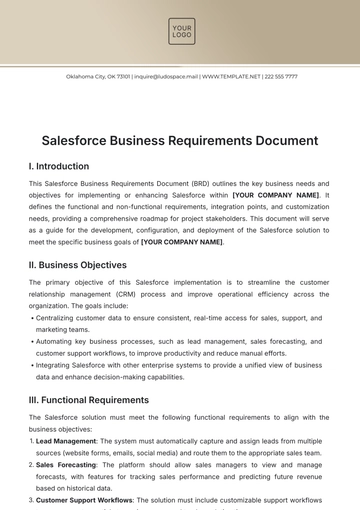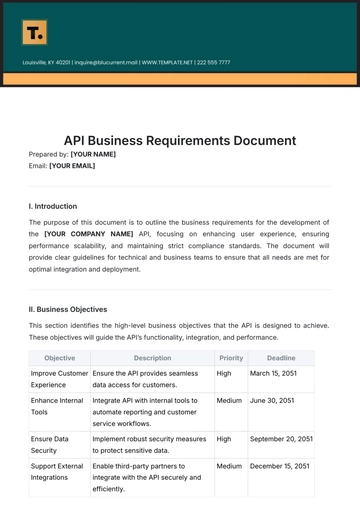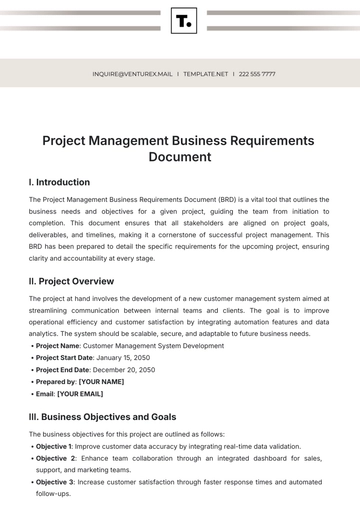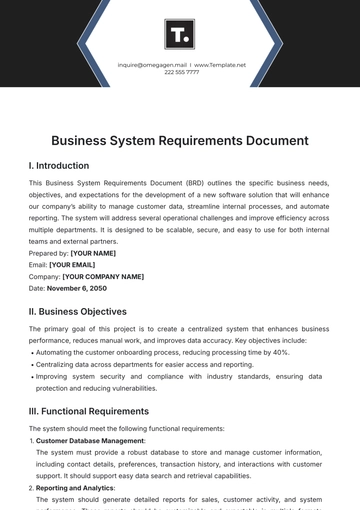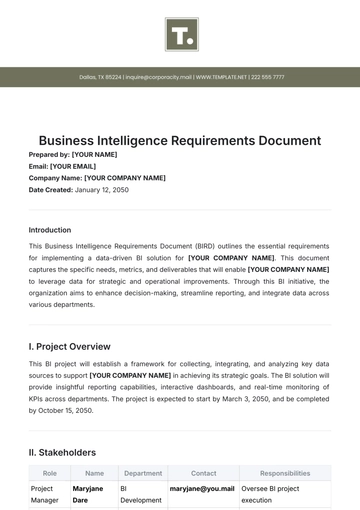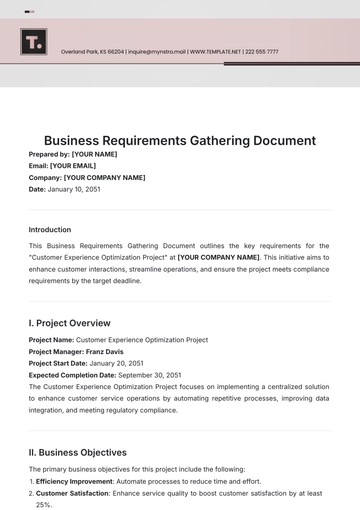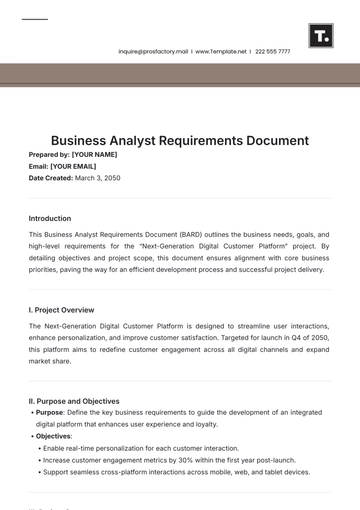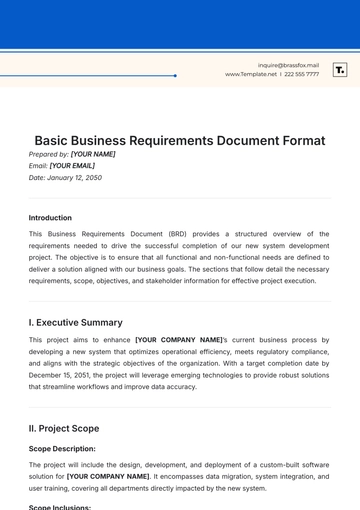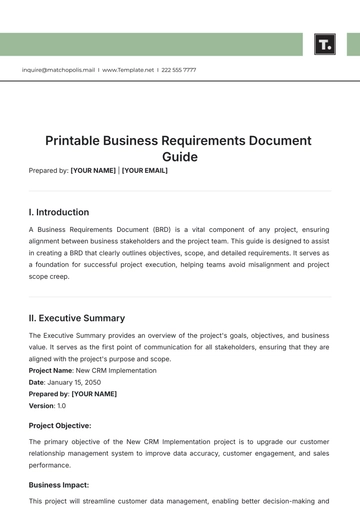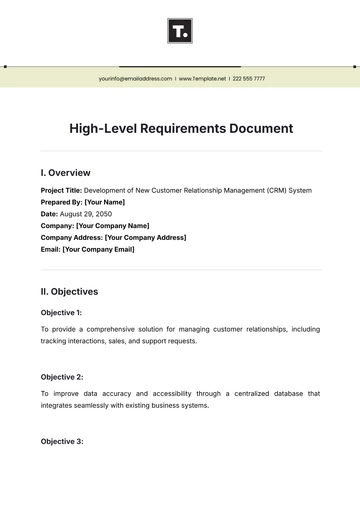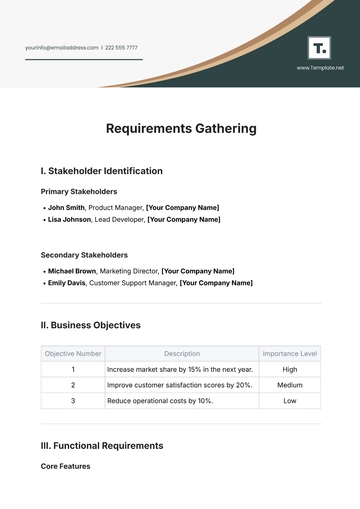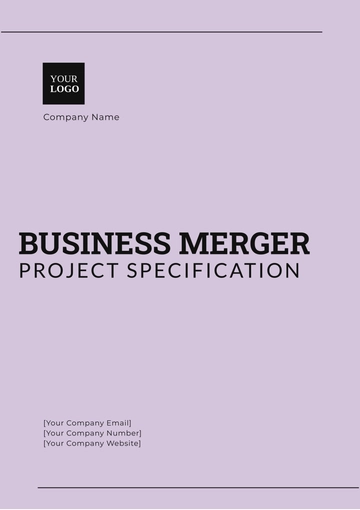Business System Requirements Document
I. Introduction
This Business System Requirements Document (BRD) outlines the specific business needs, objectives, and expectations for the development of a new software solution that will enhance our company’s ability to manage customer data, streamline internal processes, and automate reporting. The system will address several operational challenges and improve efficiency across multiple departments. It is designed to be scalable, secure, and easy to use for both internal teams and external partners.
Prepared by: [YOUR NAME]
Email: [YOUR EMAIL]
Company: [YOUR COMPANY NAME]
Date: November 6, 2050
II. Business Objectives
The primary goal of this project is to create a centralized system that enhances business performance, reduces manual work, and improves data accuracy. Key objectives include:
Automating the customer onboarding process, reducing processing time by 40%.
Centralizing data across departments for easier access and reporting.
Improving system security and compliance with industry standards, ensuring data protection and reducing vulnerabilities.
III. Functional Requirements
The system should meet the following functional requirements:
Customer Database Management:
The system must provide a robust database to store and manage customer information, including contact details, preferences, transaction history, and interactions with customer support. It should support easy data search and retrieval capabilities.
Reporting and Analytics:
The system should generate detailed reports for sales, customer activity, and system performance. These reports should be customizable and exportable in multiple formats (CSV, PDF, etc.).
Automated Workflow Management:
The system must automate key workflows, including lead generation, customer onboarding, and follow-ups, to improve operational efficiency.
User Access Control:
The system should provide role-based access, ensuring that only authorized personnel can access sensitive data and perform certain actions.
IV. Non-Functional Requirements
The system must meet the following non-functional requirements:
Performance:
The system should support at least 10,000 concurrent users without significant degradation in speed or performance.
Security:
All data must be encrypted in transit and at rest. The system must also include multi-factor authentication (MFA) for user login.
Scalability:
The system should be able to scale horizontally to accommodate future business growth and additional users without requiring a major redesign.
Usability:
The user interface (UI) must be intuitive, with minimal training required for new users.
V. Stakeholder Requirements
The following stakeholders have provided specific requirements for the system:
Sales Department:
Needs a user-friendly interface to view customer data, track sales progress, and automate follow-up reminders.
IT Department:
Requires the system to be easily integrable with existing systems and databases. They also need full system control for maintenance and security updates.
Finance Department:
Needs robust reporting tools to track revenue, analyze customer payment history, and monitor financial metrics.
End Users:
Require an easy-to-navigate dashboard with simple data entry options, as well as quick access to help and support features.
VI. Project Scope
The scope of the project is outlined as follows:
In-Scope:
Development of the customer management system, reporting tools, and automated workflows.
Integration with existing CRM and ERP systems.
Deployment of the system on company servers and cloud infrastructure.
Out-of-Scope:
VII. Assumptions and Constraints
Assumptions:
Constraints:
The project must be completed by June 30, 2052.
The budget is capped at $2.5 million, including development, integration, and deployment costs.
VIII. Acceptance Criteria
The system will be considered complete and accepted when:
It meets all specified functional and non-functional requirements.
It passes a user acceptance testing (UAT) phase, with a minimum score of 90% for user satisfaction.
It is fully integrated with existing systems and operates within the defined performance parameters.
Conclusion
This Business System Requirements Document provides a comprehensive roadmap for developing a system that will significantly improve business processes, increase productivity, and enhance data-driven decision-making. The successful delivery of this system will be a key driver of operational efficiency for [YOUR COMPANY NAME] in the coming years.
Business Requirements Document Templates @ Template.net
